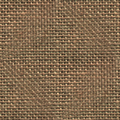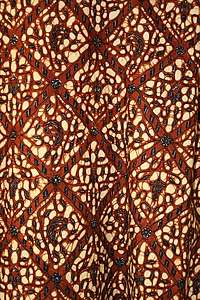Chiffon (fabric)
Chiffon (French: [ʃi.fɔ̃]; English: /ʃɪˈfɒn/, shif-ON (French chiffe cloth, or rag; Arabic شف šīff transparent, diaphanous, translucent fabric, or gauze; (عن 'an s.th.) to shimmer through, reveal)[1] is a lightweight, balanced plain-woven sheer fabric, or gauze, like gossamer, woven of alternate S- and Z-twist crepe (high-twist) yarns.[2] The twist in the crepe yarns puckers the fabric slightly in both directions after weaving, giving it some stretch and a slightly rough feel.


Early chiffon was made purely from silk. In 1938, a nylon version of chiffon was invented, followed in 1958 with the creation of polyester chiffon, which became immensely popular due to its resilience and low cost. Under a magnifying glass, chiffon resembles a fine net or mesh, which gives it some transparency.
Chiffon is most commonly used in evening wear, especially as an overlay, for giving an elegant and floating appearance to the gown. It is also a popular fabric used in blouses, ribbons, scarves and lingerie. Like other crêpe fabrics, chiffon can be difficult to work with because of its light and slippery texture. Due to this delicate nature, chiffon must be hand washed very gently.[2]
Since chiffon is a light-weight fabric which frays easily, bound or French seams must be used to stop the fabric from fraying. Chiffon is smoother and more lustrous than the similar fabric, georgette.
References
- Hans Wehr Arabic Dictionary. p. 404.
- Kadolph, Sara J., ed.: Textiles, 10th edition, Pearson/Prentice-Hall, 2007, ISBN 0-13-118769-4, p. 230.
External links



.svg.png)